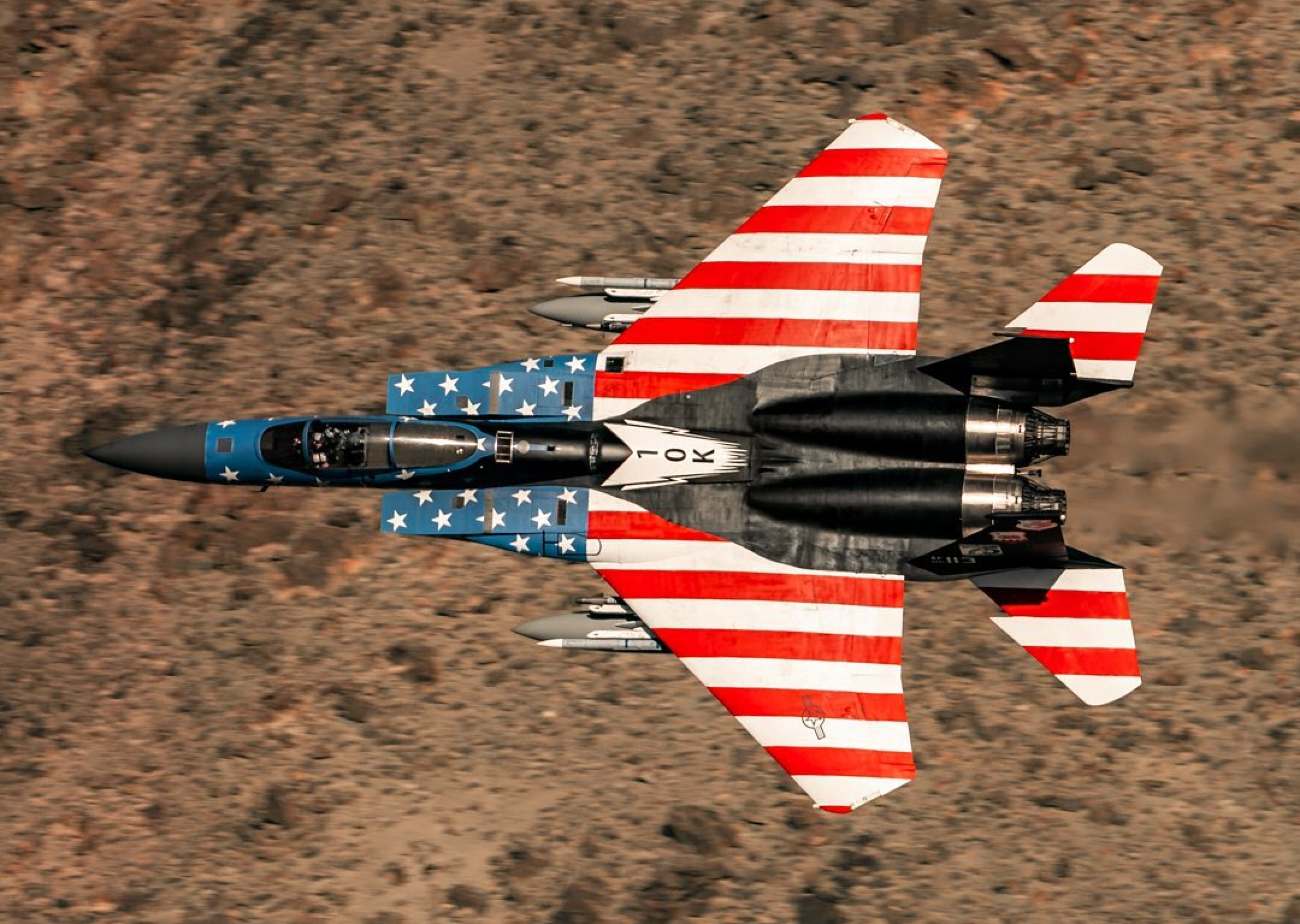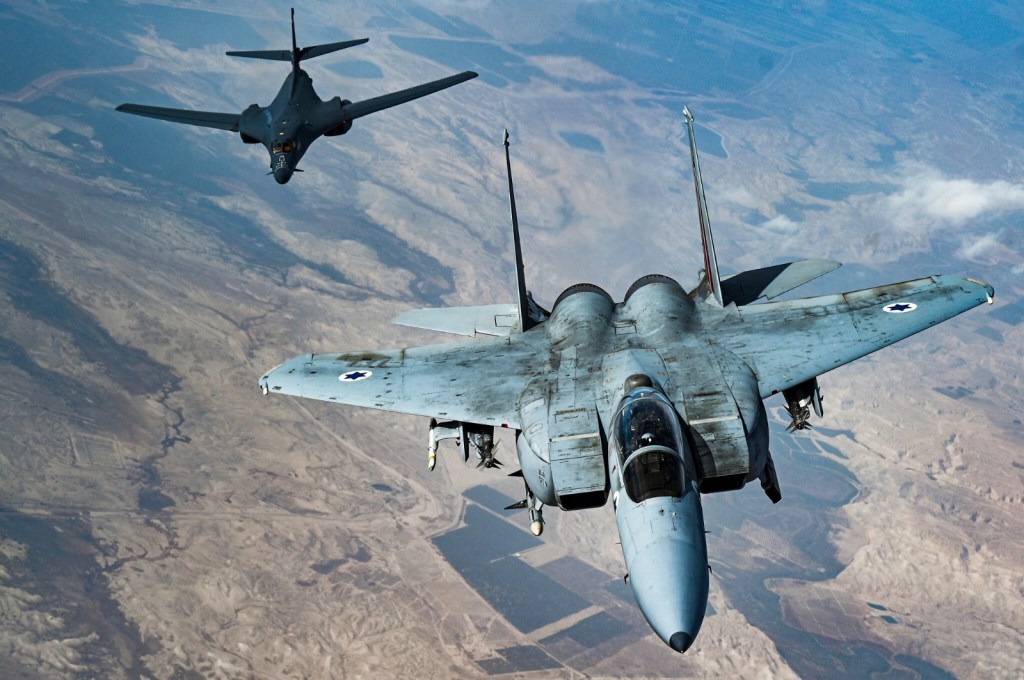The Saudi Arabian Ministry of Defense (MoD) announced that an F-15 fighter jet of the Royal Saudi Air Force (RSAF) crashed on December 7, killing the two crew members onboard.

As per details published by the Ministry, the aircraft was on a training mission when the tragedy struck. Brig. Gen. Turki al-Maliki, the Ministry’s spokesman, stated that the F-15 fighter jet accident occurred at the King Abdulaziz Air Base in Dhahran during a regular training flight.
An investigation has been launched to determine the exact cause of the crash. The spokesperson offered no further details about the tragic incident. The F-15SA is a two-seat variant of the McDonnell Douglas F-15 fighter jet, which forms the backbone of the kingdom’s fighter fleet.
The F-15SA is derived from the two-seat F-15E Strike Eagle. It is said to be the most sophisticated F-15 version, combining elements from Singapore’s F-15SG and South Korea’s F-15K Slam Eagle.
This is the second crash of the kingdom’s F-15 this year. A Saudi F-15SA fighter jet crashed during a training exercise in July this year, killing all the crew onboard. The accident occurred close to the King Khalid Air Base in Khamis Mushait, located approximately 815 kilometers southwest of the capital, Riyadh.
Earlier, a Royal Saudi Air Force (RSAF) F-15S air superiority fighter crashed at the King Abdulaziz Air Base training grounds due to a technical malfunction during a routine night-time exercise in November 2022. The aircraft crew comprising two officers, safely ejected, and there were no injuries or losses on the ground.
The spate of F-15 crashes has dented the impeccable reputation of the aircraft, which is also incidentally operated by at least three countries in the Middle Eastern region alone.
Besides Saudi Arabia, Israel Air Force (IAF) and Qatar Emeri Air Force (QEAF) are the two other operators of the Strike Eagle aircraft in the region. In Asia, the two operators are US ally South Korea and Singapore.

In fact, the United States dispatched its own F-15Es to the Middle East in October after Israel was struck by a surprise attack by the Gaza-based Hamas group. At the time, a US official familiar with the matter said that the US Air Force would likely send an additional 20-25 F-15 fighter jets to the Middle East in the coming days. The deployment was part of a wider US military expansion in the region.
The F-15 and F-16, together with several of its variations, comprise the bulk of the IAF fleet, with a smaller number of F-35s being in use. They are all being actively employed to attack targets within the Gaza Strip.
The F-15, of which Israel has at least two variants, has been extensively deployed to bomb Gaza. The bombing runs have killed more than 17,000 people.
The primary role of the F-15 fighter jet is to establish aerial dominance, yet it also serves the function of a bomber. The majority of the dropped bombs are part of the United States-designed Mk80 family, a weapon system that has been in service since the time of the Vietnam War.
With a maximum payload capacity of up to 10 tons in a single mission or sortie, the Israeli F-15 tactical fighter jet is a potent option for taking out enemy positions.

Israel is the F-15’s first export market, and its fleet is split into two primary “branches”: the F-15I “Ra’am” and the F-15 “Baz,” which includes all variants from A to D. In addition, Israel Air Force has also formally requested the United States to purchase 10 F-15EX, the most advanced variant of the F-15 built to date. It also hinted that it might eventually double this order.
No Combat Losses For F-15s
The F-15 Eagle is an American twin-engine, all-weather tactical fighter aircraft that was incredibly maneuverable and developed to establish air superiority.
During the Cold War years, the USAF stressed the necessity for an aircraft that could avoid detection as air defense systems continued to advance, which led to the creation of the F-15.
The F-15A made its debut on July 27, 1972, and the two-seat F-15B followed suit in July 1973. The aircraft type achieved its first air-to-air kill in June 1979, when an Israeli Air Force F-15A shot down a Syrian MiG-21 just six years later.

Since then, the F-15’s incredible winning streak has been added to by American, Saudi, and Israeli pilots. Up until 2008, the F-15 had 104 air-to-air victories without suffering a single loss to enemy planes. Notably, the majority of these kills were achieved by the Israeli Air Force.
In addition to becoming one of the world’s top dogfighters, the aircraft gained notoriety as a “MiG killer.”
Against that backdrop, the frequent crashes of the F-15 in Saudi Arabia does not augur well for the aircraft’s reputation, which is counted amongst the best dogfighters that have flown in the world.
